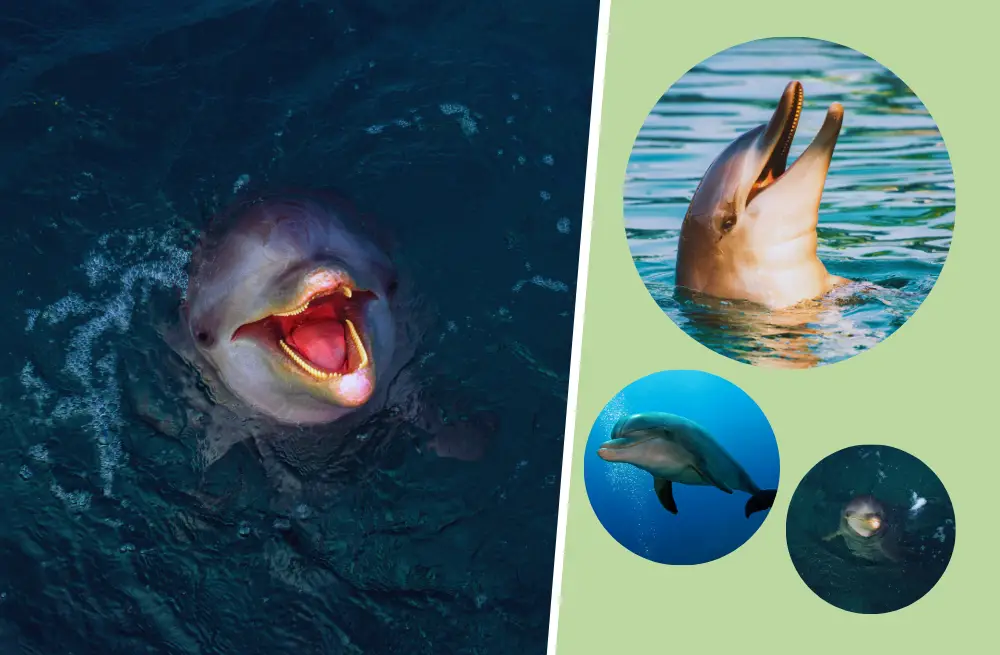In captivity, Komodo dragons (Varanus komodoensis) can live for several decades. On average, with proper care and conditions, they can reach 20 to 30 years of age. Some individuals have even lived longer.
The Komodo dragon (Varanus komodoensis) is a fascinating and iconic species of lizard, known for its impressive size and status as the world’s largest living lizard.
These magnificent reptiles are native to the Indonesian islands of Komodo, Rinca, Flores, Gili Motang, and Padar.
While much has been studied about their behavior and lifespans in the wild, there is growing interest in understanding how long Komodo dragons can live when kept in captivity.
The Captive Komodo Dragon
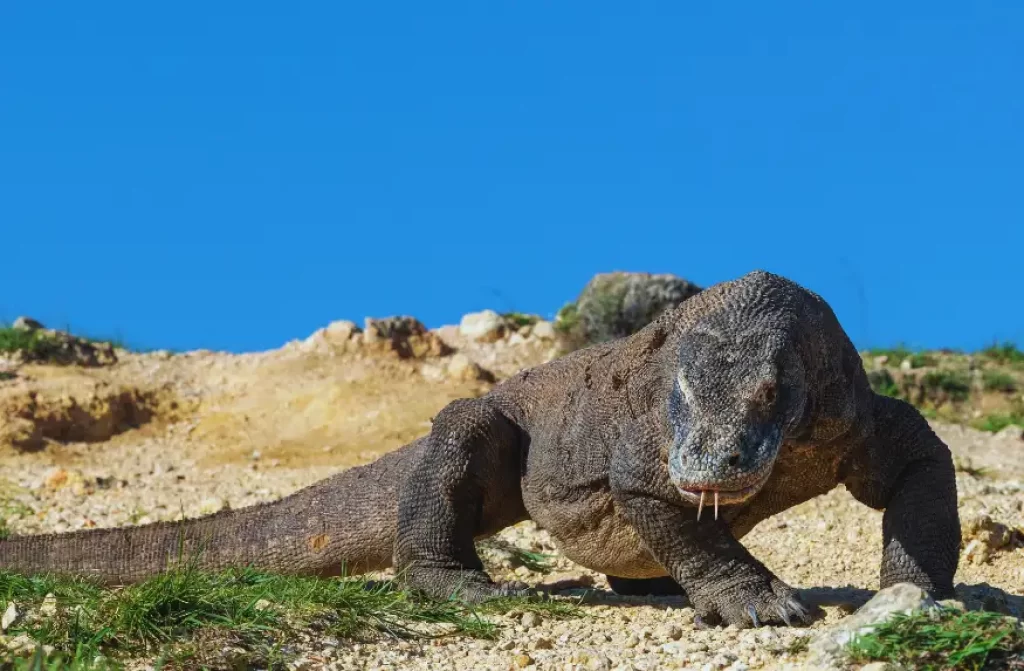
Komodo dragons have been kept in captivity in various zoos and wildlife parks around the world, providing an opportunity for researchers and conservationists to learn more about their biology, behavior, and lifespans. Here, we delve into the factors that influence the lifespan of Komodo dragons in captivity.
Dietary Considerations
Diet plays a crucial role in the longevity of Komodo dragons in captivity. In the wild, their diet consists primarily of carrion and occasionally live prey, including deer, pigs, and smaller mammals. In captivity, replicating this diet can be challenging.
Captive dragons are typically fed a diet of freshly killed meat, which may lack some of the complexities of their natural diet.
To address this issue, many captive facilities provide a varied diet and supplement it with vitamins and minerals to ensure the dragons receive the necessary nutrients. A well-balanced diet is believed to contribute significantly to the overall health and lifespan of captive Komodo dragons.
Enclosure Size and Habitat

The size of the enclosure and the quality of the habitat provided for captive Komodo dragons are crucial factors. These lizards are known for their territorial behavior and require ample space to roam, bask, and engage in natural behaviors.
Captive facilities strive to create environments that mimic their native habitat, complete with temperature gradients, water features, and basking spots.
Lack of space and environmental enrichment can lead to stress and behavioral issues in captive Komodo dragons, which can negatively impact their lifespan. Well-designed enclosures that allow for physical activity and exploration are essential for their well-being.
Veterinary Care and Disease Prevention
Regular veterinary care and disease prevention measures are vital to ensuring the health and longevity of captive Komodo dragons.
Routine health check-ups, parasite control, and vaccinations against common reptilian diseases are standard practices in reputable captive facilities. Immediate medical attention is provided in case of injuries or illnesses.
Social Interaction
Komodo dragons are typically solitary animals in the wild, but social interactions are considered beneficial for their mental and physical health in captivity.
Some facilities house multiple dragons in large enclosures, allowing them to interact as they would in the wild. However, this must be done with caution, as Komodo dragons can exhibit territorial and aggressive behaviors.
Lifespan in Captivity
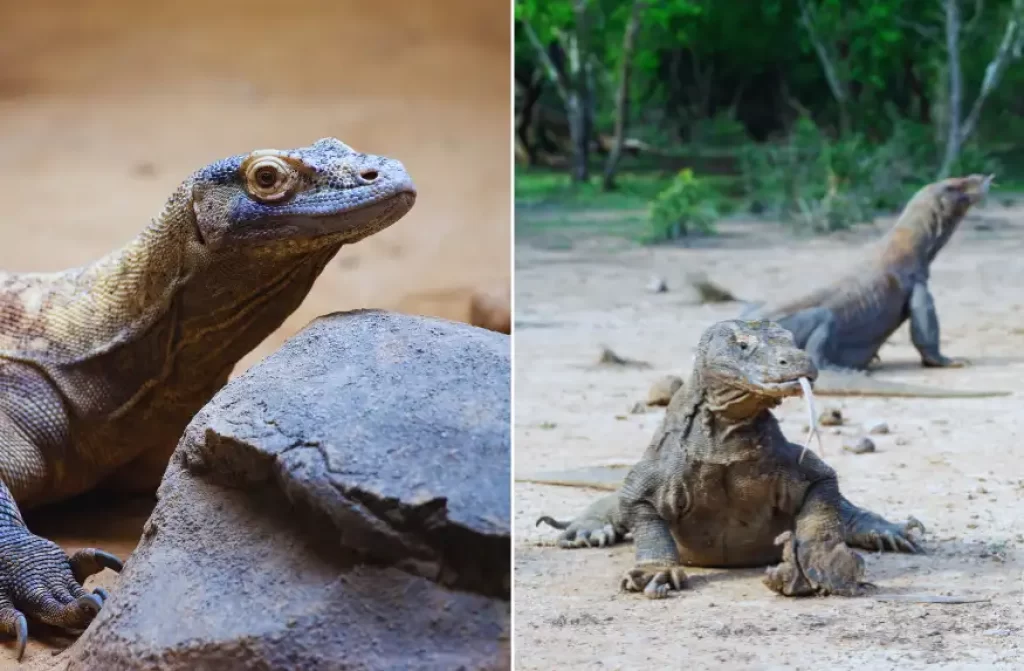
The lifespan of a Komodo dragon in captivity can vary significantly depending on the care and conditions provided.
On average, when well cared for, captive Komodo dragons can live for several decades. It’s not uncommon for them to reach 20 to 30 years of age, and some individuals have lived even longer.
One notable case is a Komodo dragon named “Fluffy” at the Los Angeles Zoo, which lived to be approximately 33 years old before passing away in 2007. This extended lifespan was attributed to the exceptional care and husbandry provided at the zoo.
Breeding Success at San Antonio Zoo
The parents of this batch of baby dragons were Kristika, a resident female dragon at the San Antonio Zoo, and Boga, a male from the Houston Zoo, the zoo press release noted.
They successfully bred last winter, and Kristika laid eggs on March 8 of this year. Incubation typically lasts 7 to 9 months, Pelke noted, and the first of the ten babies hatched on Oct. 17.
How long can Komodo dragon live in zoo?
Komodo dragons in zoos can live for up to 30 years or more. These impressive reptiles take approximately 8 to 9 years to mature, and if provided with proper care and conditions, they can thrive and live well into their third decade or beyond in captivity.
How long do Komodo dragons live in the wild?
In the wild, Komodo dragons typically have a shorter lifespan compared to those in captivity. On average, wild Komodo dragons are known to live for about 20 to 30 years.
However, their survival is influenced by various factors, including the availability of prey, habitat conditions, and threats from other predators.
It’s important to note that the harsh and competitive nature of their natural environment can make their lives challenging and result in a relatively shorter lifespan compared to their counterparts in captivity.
What is the oldest Komodo dragon in captivity?
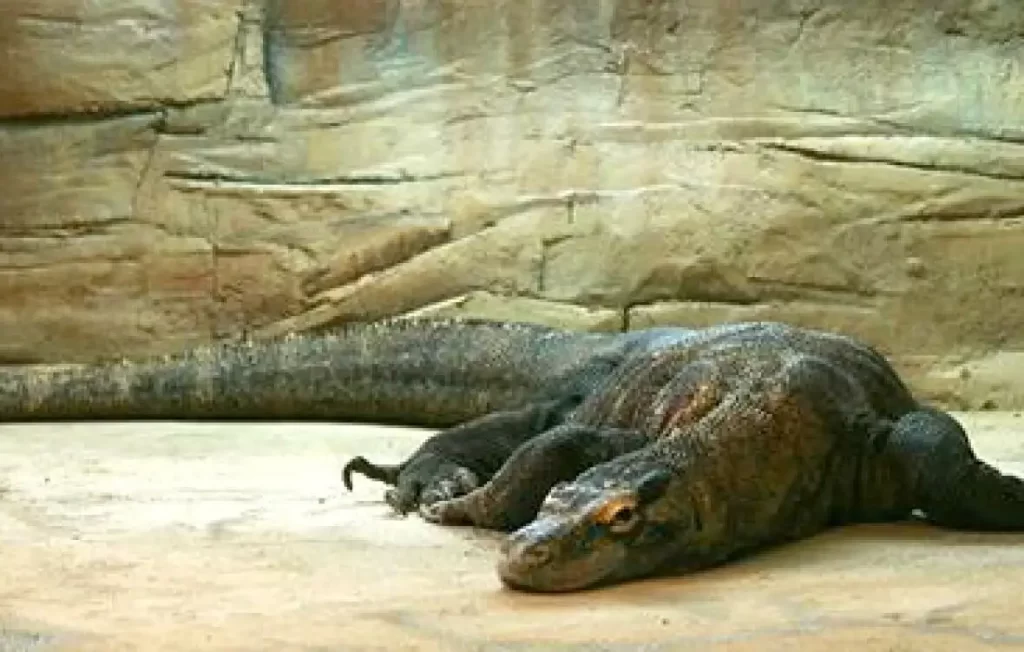
Loka, the Komodo dragon at the Calgary Zoo, was recognized as the world’s oldest Komodo dragon in captivity. She lived to be 30 years old, which is a remarkable and impressive age for these creatures.
Her long life in captivity is a testament to the dedicated care provided by the zoo staff, as well as the importance of conservation efforts for this endangered species.
Do people keep Komodo dragons as pets?
Komodo dragons are not commonly kept as pets due to their large size, potential danger, specialized care needs, and legal restrictions.
These massive lizards can grow up to 10 feet long, making them challenging to accommodate in a home environment.
Moreover, their endangered status often leads to legal prohibitions on private ownership to protect their populations in the wild. Komodo dragons require specific diets, spacious enclosures, and expert care, factors that most individuals cannot provide.
Professional facilities like zoos and conservation centers are better suited to meet their needs, ensuring the safety and well-being of both the animals and the public.
Why is Komodo dragon only in Indonesia?
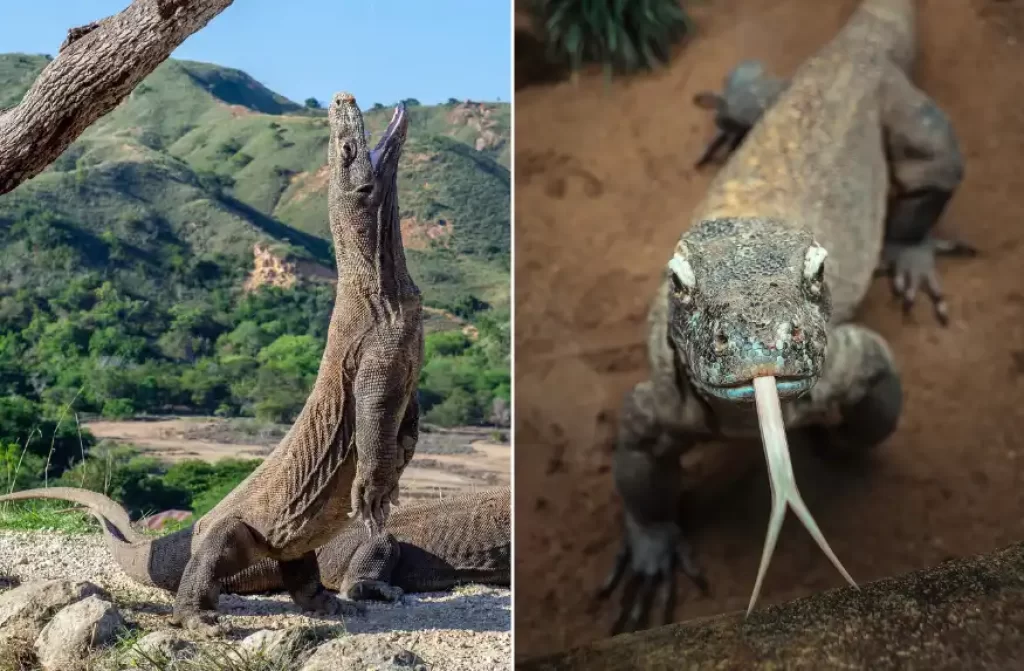
The Komodo dragon (Varanus komodoensis) is native to Indonesia because it evolved and adapted to the ecological conditions of the Indonesian archipelago. Specifically, Komodo dragons are found on several Indonesian islands, including Komodo, Rinca, Flores, Gili Motang, and Padar.
These islands provide the ideal habitat for Komodo dragons, with a combination of tropical climate, diverse prey species, and suitable nesting sites.
Over time, these lizards evolved and thrived in this unique environment, making them endemic to Indonesia. Today, these islands, including Komodo National Park, are critical for the conservation of this iconic species and are protected to ensure their survival.
Conclusion
Komodo dragons, the apex predators of their native islands, are awe-inspiring creatures with a unique set of requirements in captivity. Their lifespan in captivity is influenced by factors such as diet, enclosure size and quality, veterinary care, social interactions, and more.
With proper care, these magnificent reptiles can thrive and live well into their third decade or beyond, contributing to our understanding of their biology and the importance of their conservation.
As we continue to learn more about Komodo dragons in captivity, our ability to ensure their long and healthy lives will only improve, benefiting both these incredible animals and the ongoing efforts to conserve their species in the wild.
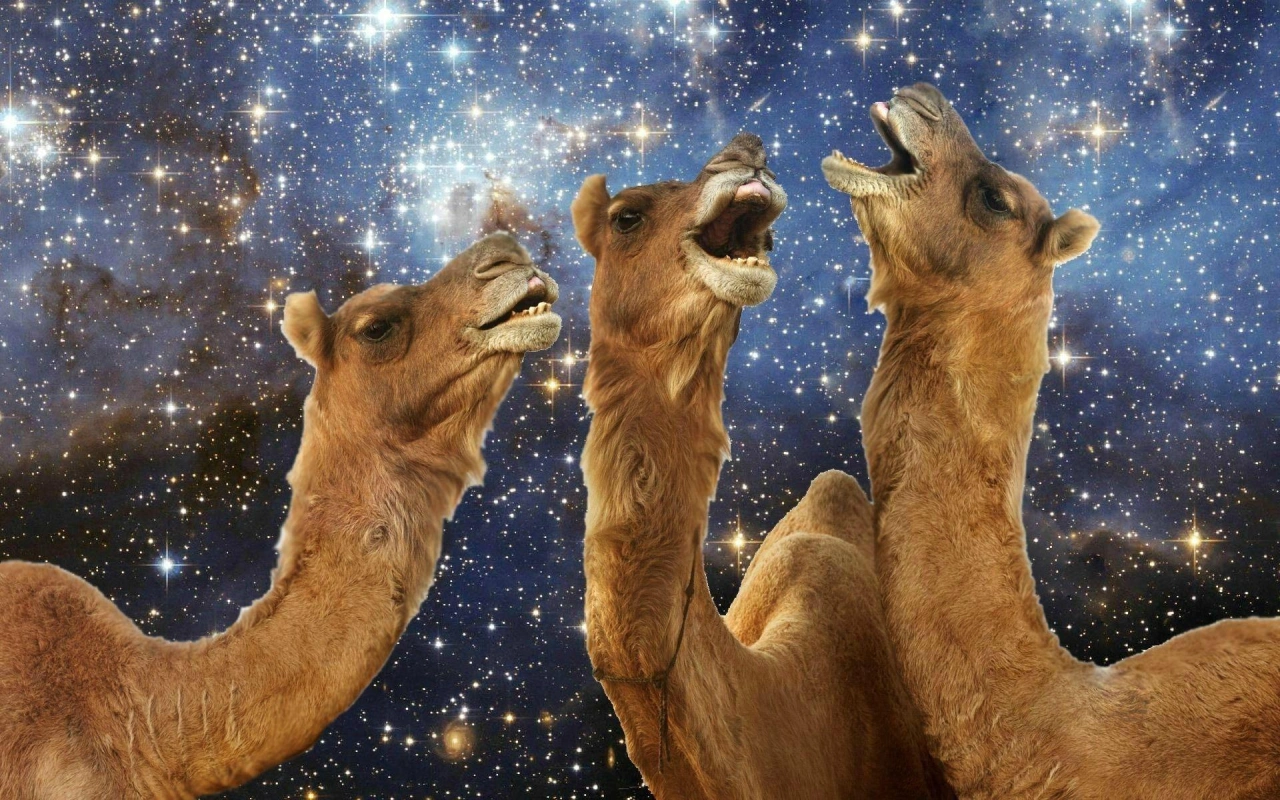
Camel Funny Videos Compilation
Kenno Marques is a self-taught English speaker deeply passionate about nature and wildlife. He dedicates his time to scouring the web for the latest animal news and engaging content, which he shares on various websites. Fluent in three languages, Kenno is currently on a journey to master German. His commitment to fostering an understanding of the natural world makes him a valuable contributor to the online community.



